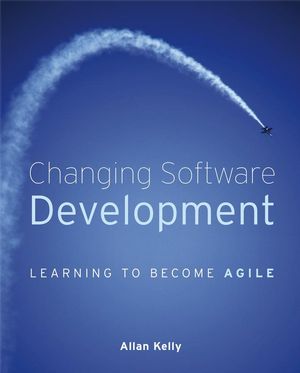Changing Software Development: Learning to Become AgileISBN: 978-0-470-51504-4
Paperback
258 pages
February 2008
 This is a Print-on-Demand title. It will be printed specifically to fill your order. Please allow an additional 10-15 days delivery time. The book is not returnable.
|
||||||
Acknowledgements.
1 Introduction.
1.1 Why read this book?
1.2 Who are software developers?
1.3 Software developers are knowledge workers.
1.4 Drucker’s challenge.
1.5 Prototype of future knowledge workers.
1.6 Software: embedded knowledge.
1.7 Authority and leadership.
1.8 Practical theory.
1.9 Begin with yourself.
1.10 Book organisation.
2 Understanding Agile.
2.1 Roots of Agile thinking.
2.2 Positioning Agile.
2.3 Common practices of Agile teams.
2.4 Applicability outside of software development.
2.5 Conclusion.
3 Knowledge.
3.1 The difference between Knowledge and Information.
3.2 Knowledge into action.
3.3 Explicit and Tacit knowledge.
3.4 Sticky knowledge.
3.5 Problems with knowledge.
3.6 Where is knowledge in software development?
3.7 Knowledge creations.
3.8 Conclusion.
4 Learning.
4.1 Three knowledge domains.
4.2 Developing software is learning.
4.3 Learning benefits your business.
4.4 Learning theories.
4.5 Learning, change, innovation, problem solving.
4.6 The role of leaders.
4.7 Seed learning.
4.8 Conclusion.
5 The learning organisation.
5.1 Defining the learning organisation.
5.2 The infinite and the finite game.
5.3 Layers of the organisations.
5.4 Learning in practice: Senge’s view.
5.5 Blocks to learning.
5.6 Conclusion.
6 Information Technology – the bringer of change.
6.1 Change.
6.2 Benefits of technology change.
6.3 Change is what IT people do to other people.
6.4 Software projects fail: why are we surprised?
6.5 Change starts with business requirements.
6.6 Conclusion.
7 Understanding change.
7.1 Defining change.
7.2 Change spectrum.
7.3 Radical change.
7.4 Routine change in software development.
7.5 Continuous improvement.
7.6 Charting a course.
7.7 Internal and External forces for change.
7.8 Conclusion.
8 Change models.
8.1 Learning and Change.
8.2 Lewin’s change theory.
8.3 Satir’s theory of change.
8.4 Kotter.
8.5 Theory E and Theory O of change.
8.6 Appreciative inquiry.
8.7 Models, models, models.
8.8 Motivating change.
8.9 When not to change.
8.10 Conclusion.
9 Making change happen.
9.1 Build a case for change.
9.2 Slack in action: make time and space for learning and change.
9.3 Leading the change.
9.4 Create feedback loops.
9.5 Remove barriers.
9.6 Conclusion.
10. Individuals and empowerment.
10.1 Involve people.
10.2 Coaching.
10.3 Empowerment.
10.4 That difficult individual.
10.5 Developing the next leaders.
10.6 Time to go.
10.7 Conclusion.
11. Rehearsing tomorrow.
11.1 Future memories.
11.2 Planning.
11.3 Change events.
11.4 Outsiders.
11.5 Conclusion.
12 New beginnings.
12.1 The change problem.
12.2 Bottom-up over top-down.
12.3 Begin with yourself.
12.4 Making learning happen.
12.5 Create a vision, draw up a plan.
12.6 Three interlocking ideas.
12.7 Change never ends.
12.8 Conclusion.
Further reading.
Agile and Lean software development.
Business.
Knowledge.
Learning and Change.
Futher Reading.
References.
Index.



